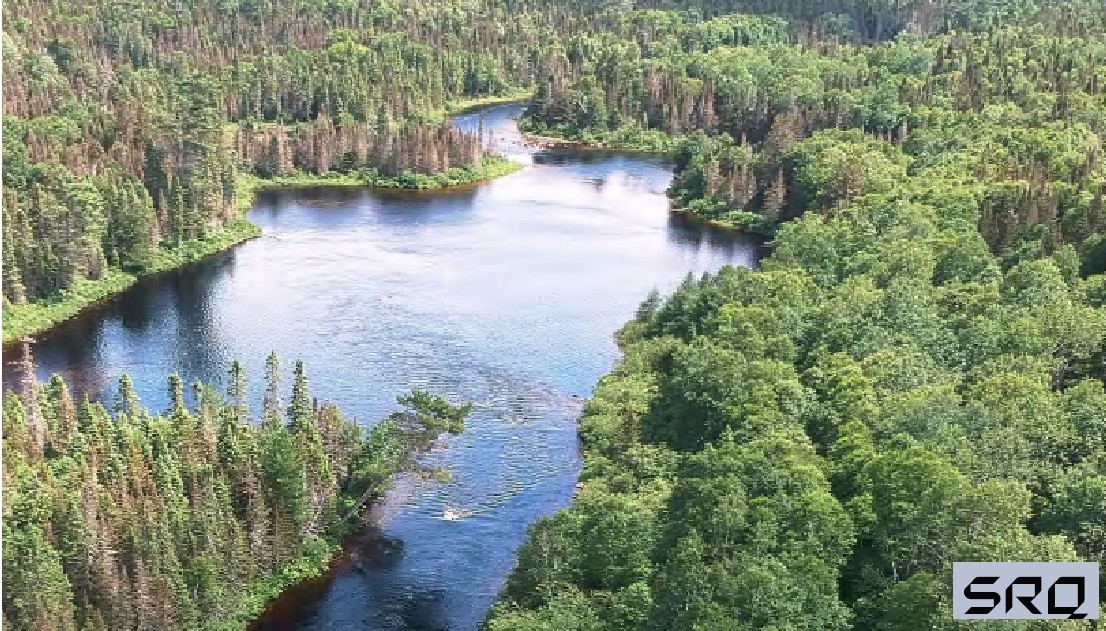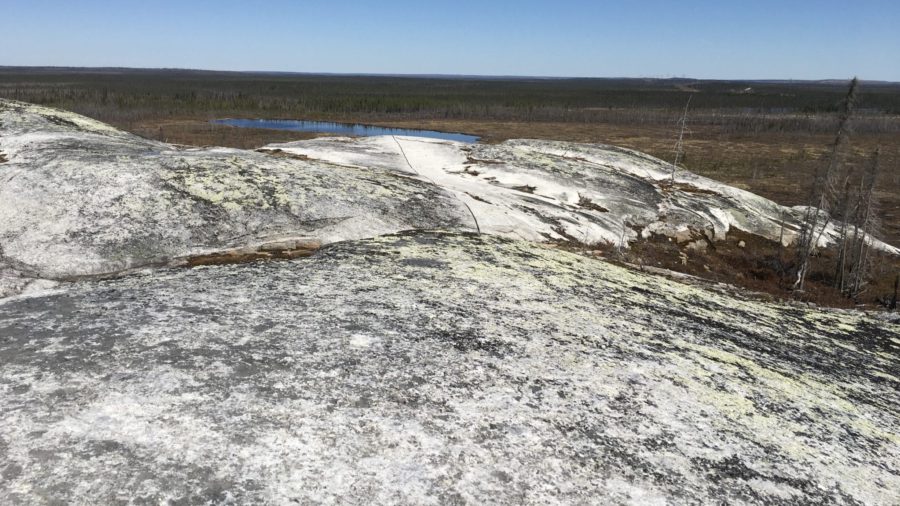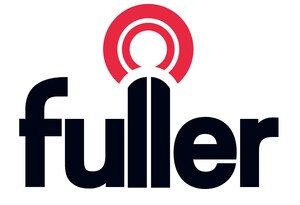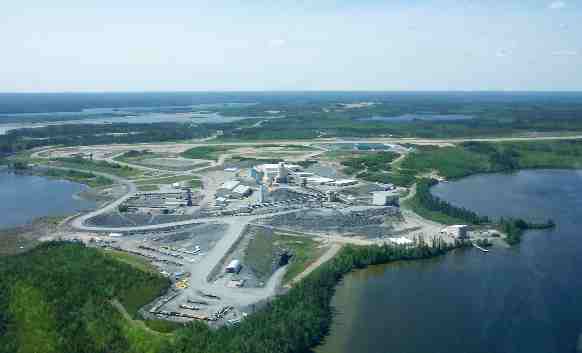[caption id="attachment_1003733178" align="alignnone" width="550"]

Syncrude has commissioned the largest-yet field pilot of its coke-slurry technology to treat oilsands process water. Photo credit: Syncrude[/caption]
Following the lead of the federal government, Alberta is undertaking a major re-scoping of work with the goal to establish rules to allow for release of process-affected water back into the Athabasca River from any oilsands mine by 2023.
Up until mid-November, a science team established by Alberta Environment and Parks chief scientist Fred Wrona was setting up the systems to evaluate process water release from a single project, Syncrude, using the industry’s most advanced technology for this application.
Right now there is zero release of oilsands process water allowed back into the environment, which has contributed to the accumulation of more than one trillion litres of tailings in ponds north of Fort McMurray. While to some extent the tailings ponds act as process vessels to enable water recycling back into bitumen extraction, the release of this water is a key aspect of the ultimate reclamation of the landscape.
According to policy recommendations published by the Canadian Association of Petroleum Producers (CAPP) in 2017, the first mine will need to return water by 2023 in order to successfully reclaim tailings ponds and achieve mine closure.
“A process to return water needs to be in place years in advance. If this does not occur, additional tailings storage will be required, which is contrary to the stated objectives of the [Alberta] Tailings Management Framework] and the desires of stakeholders,” CAPP said, at the time recommending government “actively pursue initiatives relative to the regulatory processes for water release applications as well as the development of appropriate, science based, criteria for release of water to mitigate potential for unacceptable local or regional effects.”
CAPP is pleased with the change in scope for Alberta Environment, vice-president Ben Brunnen told the DOB via email. According to CAPP spokeswoman Tonya Zelinsky, “the 2023 timeline was made arbitrarily because there is a need to see releases to occur soon, rather than by a specific year. Further, there is an intent to see oilsands release normalized as it is for every other mining sector in Canada.”
Alberta Environment spokesman Josh Zarobiak said Environment and Climate Change Canada has developed sector-specific regulations for release of treated effluent for several sectors, including pulp and paper, metal and diamond mining, and petroleum refining.
“Due to these policy shifts at the federal level, the science team has since realigned its efforts to work toward informing key regulatory updates needed for safe release of treated mine water from any oilsands mine,” he said.
Syncrude is the only operation to have filed an application to pilot technology to treat process affected water for release, which led to the formation of Wrona’s science team in January 2018. Syncrude’s technology uses petroleum coke produced as a byproduct of bitumen upgrading like an activated carbon filter one might find in the home. Syncrude has been working on the coke-slurry system since it was “discovered” in 2005, according senior engineering associate Warren Zubot, who is listed as an inventor on the technology’s patent. The technology underwent a field pilot in 2012.
“In 2005 it was a hunch; we knew we were making this petroleum coke, which is a carbon material, and of course knowing that it’s carbon, the hypothesis was ‘hey is it possible this is working like a conventional activated carbon and treating the water,’ so all we had to do in the beginning was go out to the end of the pipeline where the material is being stored and we sampled the water and we noticed big reductions in the constituents of concern in the water and that was the genesis of the whole project,” Zubot said.
“Activated carbon has been around for years and years and years. Most people that use activated carbon try to use it only when they have to because it is a very expensive thing to go and buy commercially, but just by virtue of our upgrading process it’s a byproduct and so we’re trying to develop this technology to assess if it does have a potential commercial application within our business.”
As the only oilsands mining facility to use fluid cokers in its upgrading process, the technology is specific to Syncrude, notes Canada’s Oil Sands Innovation Alliance (COSIA).
However, “the research findings are being shared with all COSIA members and its potential success would have industry-wide significance because it would provide a venue to develop water treatment criteria and demonstrate water can be safely returned to the environment,” the organization says.
Wrona’s evaluation team included Alberta Environment, Alberta Health Services, Environment and Climate Change Canada, and downstream Indigenous communities.
“It was basically looking at whether the technology developed by Syncrude reached sufficient treatment scale where we could actually do more large-scale field testing," Wrona told the DOB.
“Now the science design is being asked to be expanded to look at sector-scale release of treated mine waters in the environment at a regional level. It’s a re-scoping of the work and a re-scoping of the specialized science team that I need to look at that work. The modelling efforts and the other pieces that need to be done are not now restricted to a certain reach of the Athabasca River; we have to look at it from a systems point of view, literally from where the operators are potentially going to be all the way down to the Peace-Athabasca delta.”
This fall Syncrude commissioned its largest field test to-date of its coke-slurry treatment system. The pilot facility was originally scheduled to start running by July 2018, but was delayed following the site-wide power outage at Syncrude in June 2018 that shut down project operations, Alberta Environment says.
Zubot said one of the objectives for summer 2020 is to take the treated water and subject it to a comprehensive water evaluation program under the auspices of Wrona’s team, which the chief scientist confirmed is still planned to occur.
“We feel that work is still contributory to the bigger issue, because we’re actually testing toxicology end points that Indigenous organizations have identified…It still has relevance to the broader scale.”
This article was originally posted on
www.dailyoilbulletin.com.

 Syncrude has commissioned the largest-yet field pilot of its coke-slurry technology to treat oilsands process water. Photo credit: Syncrude[/caption]
Following the lead of the federal government, Alberta is undertaking a major re-scoping of work with the goal to establish rules to allow for release of process-affected water back into the Athabasca River from any oilsands mine by 2023.
Up until mid-November, a science team established by Alberta Environment and Parks chief scientist Fred Wrona was setting up the systems to evaluate process water release from a single project, Syncrude, using the industry’s most advanced technology for this application.
Right now there is zero release of oilsands process water allowed back into the environment, which has contributed to the accumulation of more than one trillion litres of tailings in ponds north of Fort McMurray. While to some extent the tailings ponds act as process vessels to enable water recycling back into bitumen extraction, the release of this water is a key aspect of the ultimate reclamation of the landscape.
According to policy recommendations published by the Canadian Association of Petroleum Producers (CAPP) in 2017, the first mine will need to return water by 2023 in order to successfully reclaim tailings ponds and achieve mine closure.
“A process to return water needs to be in place years in advance. If this does not occur, additional tailings storage will be required, which is contrary to the stated objectives of the [Alberta] Tailings Management Framework] and the desires of stakeholders,” CAPP said, at the time recommending government “actively pursue initiatives relative to the regulatory processes for water release applications as well as the development of appropriate, science based, criteria for release of water to mitigate potential for unacceptable local or regional effects.”
CAPP is pleased with the change in scope for Alberta Environment, vice-president Ben Brunnen told the DOB via email. According to CAPP spokeswoman Tonya Zelinsky, “the 2023 timeline was made arbitrarily because there is a need to see releases to occur soon, rather than by a specific year. Further, there is an intent to see oilsands release normalized as it is for every other mining sector in Canada.”
Alberta Environment spokesman Josh Zarobiak said Environment and Climate Change Canada has developed sector-specific regulations for release of treated effluent for several sectors, including pulp and paper, metal and diamond mining, and petroleum refining.
“Due to these policy shifts at the federal level, the science team has since realigned its efforts to work toward informing key regulatory updates needed for safe release of treated mine water from any oilsands mine,” he said.
Syncrude is the only operation to have filed an application to pilot technology to treat process affected water for release, which led to the formation of Wrona’s science team in January 2018. Syncrude’s technology uses petroleum coke produced as a byproduct of bitumen upgrading like an activated carbon filter one might find in the home. Syncrude has been working on the coke-slurry system since it was “discovered” in 2005, according senior engineering associate Warren Zubot, who is listed as an inventor on the technology’s patent. The technology underwent a field pilot in 2012.
“In 2005 it was a hunch; we knew we were making this petroleum coke, which is a carbon material, and of course knowing that it’s carbon, the hypothesis was ‘hey is it possible this is working like a conventional activated carbon and treating the water,’ so all we had to do in the beginning was go out to the end of the pipeline where the material is being stored and we sampled the water and we noticed big reductions in the constituents of concern in the water and that was the genesis of the whole project,” Zubot said.
“Activated carbon has been around for years and years and years. Most people that use activated carbon try to use it only when they have to because it is a very expensive thing to go and buy commercially, but just by virtue of our upgrading process it’s a byproduct and so we’re trying to develop this technology to assess if it does have a potential commercial application within our business.”
As the only oilsands mining facility to use fluid cokers in its upgrading process, the technology is specific to Syncrude, notes Canada’s Oil Sands Innovation Alliance (COSIA).
However, “the research findings are being shared with all COSIA members and its potential success would have industry-wide significance because it would provide a venue to develop water treatment criteria and demonstrate water can be safely returned to the environment,” the organization says.
Wrona’s evaluation team included Alberta Environment, Alberta Health Services, Environment and Climate Change Canada, and downstream Indigenous communities.
“It was basically looking at whether the technology developed by Syncrude reached sufficient treatment scale where we could actually do more large-scale field testing," Wrona told the DOB.
“Now the science design is being asked to be expanded to look at sector-scale release of treated mine waters in the environment at a regional level. It’s a re-scoping of the work and a re-scoping of the specialized science team that I need to look at that work. The modelling efforts and the other pieces that need to be done are not now restricted to a certain reach of the Athabasca River; we have to look at it from a systems point of view, literally from where the operators are potentially going to be all the way down to the Peace-Athabasca delta.”
This fall Syncrude commissioned its largest field test to-date of its coke-slurry treatment system. The pilot facility was originally scheduled to start running by July 2018, but was delayed following the site-wide power outage at Syncrude in June 2018 that shut down project operations, Alberta Environment says.
Zubot said one of the objectives for summer 2020 is to take the treated water and subject it to a comprehensive water evaluation program under the auspices of Wrona’s team, which the chief scientist confirmed is still planned to occur.
“We feel that work is still contributory to the bigger issue, because we’re actually testing toxicology end points that Indigenous organizations have identified…It still has relevance to the broader scale.”
This article was originally posted on
Syncrude has commissioned the largest-yet field pilot of its coke-slurry technology to treat oilsands process water. Photo credit: Syncrude[/caption]
Following the lead of the federal government, Alberta is undertaking a major re-scoping of work with the goal to establish rules to allow for release of process-affected water back into the Athabasca River from any oilsands mine by 2023.
Up until mid-November, a science team established by Alberta Environment and Parks chief scientist Fred Wrona was setting up the systems to evaluate process water release from a single project, Syncrude, using the industry’s most advanced technology for this application.
Right now there is zero release of oilsands process water allowed back into the environment, which has contributed to the accumulation of more than one trillion litres of tailings in ponds north of Fort McMurray. While to some extent the tailings ponds act as process vessels to enable water recycling back into bitumen extraction, the release of this water is a key aspect of the ultimate reclamation of the landscape.
According to policy recommendations published by the Canadian Association of Petroleum Producers (CAPP) in 2017, the first mine will need to return water by 2023 in order to successfully reclaim tailings ponds and achieve mine closure.
“A process to return water needs to be in place years in advance. If this does not occur, additional tailings storage will be required, which is contrary to the stated objectives of the [Alberta] Tailings Management Framework] and the desires of stakeholders,” CAPP said, at the time recommending government “actively pursue initiatives relative to the regulatory processes for water release applications as well as the development of appropriate, science based, criteria for release of water to mitigate potential for unacceptable local or regional effects.”
CAPP is pleased with the change in scope for Alberta Environment, vice-president Ben Brunnen told the DOB via email. According to CAPP spokeswoman Tonya Zelinsky, “the 2023 timeline was made arbitrarily because there is a need to see releases to occur soon, rather than by a specific year. Further, there is an intent to see oilsands release normalized as it is for every other mining sector in Canada.”
Alberta Environment spokesman Josh Zarobiak said Environment and Climate Change Canada has developed sector-specific regulations for release of treated effluent for several sectors, including pulp and paper, metal and diamond mining, and petroleum refining.
“Due to these policy shifts at the federal level, the science team has since realigned its efforts to work toward informing key regulatory updates needed for safe release of treated mine water from any oilsands mine,” he said.
Syncrude is the only operation to have filed an application to pilot technology to treat process affected water for release, which led to the formation of Wrona’s science team in January 2018. Syncrude’s technology uses petroleum coke produced as a byproduct of bitumen upgrading like an activated carbon filter one might find in the home. Syncrude has been working on the coke-slurry system since it was “discovered” in 2005, according senior engineering associate Warren Zubot, who is listed as an inventor on the technology’s patent. The technology underwent a field pilot in 2012.
“In 2005 it was a hunch; we knew we were making this petroleum coke, which is a carbon material, and of course knowing that it’s carbon, the hypothesis was ‘hey is it possible this is working like a conventional activated carbon and treating the water,’ so all we had to do in the beginning was go out to the end of the pipeline where the material is being stored and we sampled the water and we noticed big reductions in the constituents of concern in the water and that was the genesis of the whole project,” Zubot said.
“Activated carbon has been around for years and years and years. Most people that use activated carbon try to use it only when they have to because it is a very expensive thing to go and buy commercially, but just by virtue of our upgrading process it’s a byproduct and so we’re trying to develop this technology to assess if it does have a potential commercial application within our business.”
As the only oilsands mining facility to use fluid cokers in its upgrading process, the technology is specific to Syncrude, notes Canada’s Oil Sands Innovation Alliance (COSIA).
However, “the research findings are being shared with all COSIA members and its potential success would have industry-wide significance because it would provide a venue to develop water treatment criteria and demonstrate water can be safely returned to the environment,” the organization says.
Wrona’s evaluation team included Alberta Environment, Alberta Health Services, Environment and Climate Change Canada, and downstream Indigenous communities.
“It was basically looking at whether the technology developed by Syncrude reached sufficient treatment scale where we could actually do more large-scale field testing," Wrona told the DOB.
“Now the science design is being asked to be expanded to look at sector-scale release of treated mine waters in the environment at a regional level. It’s a re-scoping of the work and a re-scoping of the specialized science team that I need to look at that work. The modelling efforts and the other pieces that need to be done are not now restricted to a certain reach of the Athabasca River; we have to look at it from a systems point of view, literally from where the operators are potentially going to be all the way down to the Peace-Athabasca delta.”
This fall Syncrude commissioned its largest field test to-date of its coke-slurry treatment system. The pilot facility was originally scheduled to start running by July 2018, but was delayed following the site-wide power outage at Syncrude in June 2018 that shut down project operations, Alberta Environment says.
Zubot said one of the objectives for summer 2020 is to take the treated water and subject it to a comprehensive water evaluation program under the auspices of Wrona’s team, which the chief scientist confirmed is still planned to occur.
“We feel that work is still contributory to the bigger issue, because we’re actually testing toxicology end points that Indigenous organizations have identified…It still has relevance to the broader scale.”
This article was originally posted on 




Comments